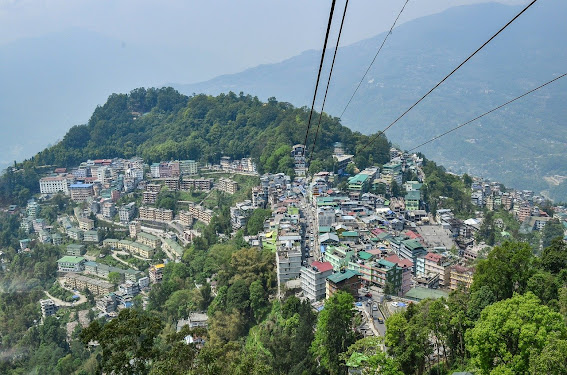Sikkim One of the most alluring vacationer locations in India, celebrated for tea nurseries and Kanchenjunga, and its characteristic magnificence however ever thought about how Sikkim turned into a piece of India.
Gangtok is the capital city of the Sikkim. You can feel the natural beauty and positive vibes when you visit sikkim. It is so beautiful and the people of sikkim are welcoming, polite, and very responsible citizens.
The police of sikkim is also very helpful.
Some Useful External Links for Reference:
- https://answers.microsoft.com/en-us/windows/forum/windows_7-start/icons-like-wifi-is-not-visible-in-windows-7/c7279107-8cc6-4fc5-99eb-cee6a709c6b6?tm=1592418511626
- https://www.behance.net/briansmith40/resume
- https://charity.gofundme.com/o/en/campaign/invest-time-in-learning-the-passion-to-learn
- https://draft.blogger.com/profile/11865061486605257170
- https://draft.blogger.com/profile/01282862112262146973
- https://www.blogger.com/profile/09595808072710272471
- https://www.blogger.com/profile/15898295976792639886
- https://social.msdn.microsoft.com/Profile/Brian_Smith_
- https://social.msdn.microsoft.com/profile/stella%20jonas/
- https://charity.gofundme.com/o/en/campaign/find-your-passion-and-work-on-it
- https://pixabay.com/forum/questions-about-pixabay-11/is-there-any-terms-and-conditions-for-using-pixaba-10487
- https://trove.nla.gov.au/list/145713
- https://support.google.com/adsense/thread/62468732?hl=en
- https://profile.hatena.ne.jp/usersadvice/profile
- https://telegra.ph/How-Technology-Helps--Impacts-in-our-Daily-Lives-08-03
- https://social.msdn.microsoft.com/Profile/DarrenWilliams2
- https://docs.microsoft.com/en-us/answers/questions/59361/when-i-open-4-tabs-simultaneously-my-windows-7-res.html
- https://sites.google.com/view/z-shadow-similar-websites/home
- https://sites.google.com/view/usersadvice/home
- https://steemit.com/@usersadvice/
We present to you the History of this State:-
Sikkim was utilized to be a government from 1642 to 16 May 1975 as it was controlled by Chogyals from the Namgyal Dynasty. This tradition has its underlying foundations from Tibet, It is accepted that the principal King of Sikkim relocated from Tibet that is the reason this state has a Tibetan and Buddhist Culture
The presence of Nepali populace over yonder additionally prompts Cultural Linkage to Nepal.
During the eighteenth Century, Gorkhas assaulted Sikkim and caught some region of Sikkim and managed over Sikkim around 40 years and a significant number of the Nepalese populace called as Lepcha or Bhutia came to Sikkim.
After Anglo Nepal War with British during 1814-1816, the Kingdom was lined up with British East India Company and the Treaty of Titalia was marked with British EIC and the Nepalese obtained realm was reestablished to Sikkim after Nepalese lost in Anglo Nepal War.
Connection with the British EIC
At first, the relationship was acceptable the however it had a few conflicts began around 1850 once again Darjeeling.
Britishers requested Darjeeling for its extraordinary land significance as a result of Tea Gardens over yonder, the King and the Landlords of Sikkim acknowledged this arrangement and based Britishers to give a yearly measure of 6000. After some time BEIC didn't give that concurred sum because of which conflicts began in Darjeeling.
English had to the sent armed force to Darjeeling for controlling the conflicts and they again began giving the yearly add up to proprietors of Sikkim.
English Protectorate(1890-1950)
In 1890 there was a deal marked among British and China called as Anglo Chinese Treaty. It was reported that the Chinese zone of Influence would be until Tibet and comparatively British Area of Influence would be Till Sikkim them two can't attack each other zone.
Indian Protectorate(1950-1975)
After the India freedom, Sikkim Became a piece of India as a protectorate with its own approaches and rules like the august states and the Indian government can't practice its own standard and guideline over yonder that time as it's Sikkim was controlled by its own administration.
During the 1940s, there were some political developments began in Sikkim by the majoritarian Nepalese population(75 percent of Sikkim populace in 1940s)for the interest of Constitutional Monarchy.
Indo Sikkim Treaty,1950
This settlement was Signed in the middle of Maharaja of Sikkim-Tashi Namgyal and the Indian Government Representative to perceived as Sikkim as the Protectorate of Independent India, and Tashi Namgyal settled upon the choice to make Sikkim an established Monarchy and to direct its own political decision and to be administered by a chosen agent.
Kazi Lendup Dorji was the principal chosen Chief Minister of Sikkim speaking to Sikkim Congress.
Nonetheless, Chogyal actually remained the sacred ruler in the new framework.
Sikkim turned into a self-governing state with India having controls just in interchanges, outside undertakings and Defense having its own state banner and Tashi Namgyal likewise used to extend Sikkim as an autonomous state during his visits
Connection between Jawaharlal Nehru and Tashi Namgyal was acceptable till 1963 until the demise of Tashi Namgyal.
Palden Thomdup Namgyal – The last Monarch of Sikkim wedded to an American named Hope Cooke in 1963 who was accepted to be a CIA operator and purposely came to Sikkim to make turmoil over yonder.
Expectation was an awesome essayist and composed articles about the independency of Sikkim and other provocative articles and gradually influenced the organization of the state which was not preferred by the Indian Government and the govt agent over yonder.
Developing Unrest in Sikkim during1965-1970
- Due to international distress expanding around Sikkim during the 1960s in light of the Naxalbari development and ascent of communalism in West Bengal and Nepal and extension of Tibet by the Chinese Army, the Indian government was concerned that China may assault the Sikkim.
- This turned out to be clear after the Chola la Incident in 1967 where India won the war with China who attempted to invade into Sikkim close to the Chola la Pass.
16 May 1975 Sikkim become State of India - Sikkim Become part of India on this day
On 22nd April 1975, the Indian government passed the 36th amendment to the constitution and Sikkim turned into a piece of India as the 22nd State of our nation and on sixteenth May 1975, it got official and furthermore known as the Sikkim Day.
See Also:
- Amazing places to explore in Jaipur
- Beautiful Northeast India - Why it is an underrated tourist place and interesting facts
- If You want to feel the natural beauty of Mountains then Visit the beautiful City Shimla
- Make Unforgettable Memories Visiting Amazing Places in Manali
- Intriguing tourist Places for nature lovers
